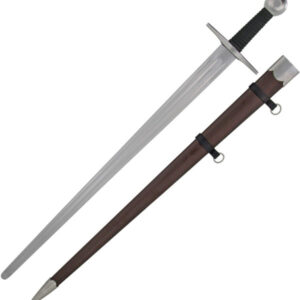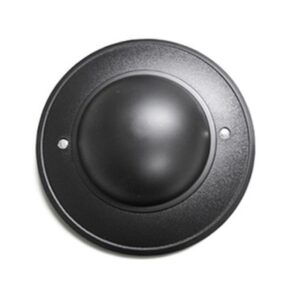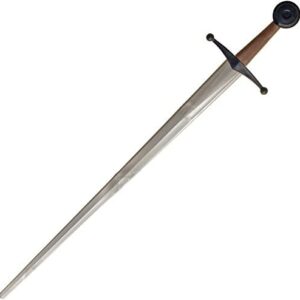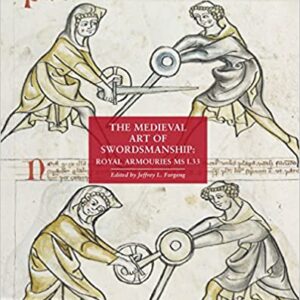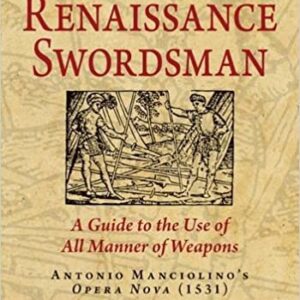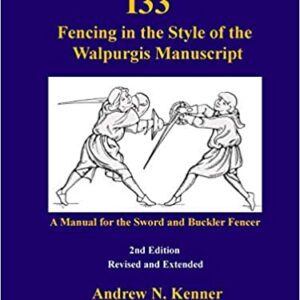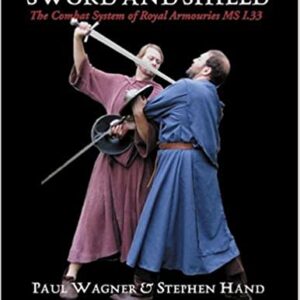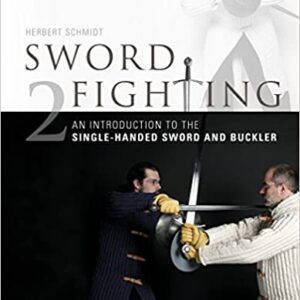Path of the Sword and Buckler
Historically the sword and buckler would be the kind of techniques a knight or noble boy was first taught, often as a teenager of around thirteen, using a cudgel as a training weapon for the sword.
- Hanwei Practical Knightly Practice Sword
- Cold Steel Synthetic Medieval Buckler
- Red Dragon Armoury Synthetic Arming Sword
There are accounts of sword and buckler practice having been a pastime enjoyed as a form of martial sport by commoners in both England and Northern Italy from the 13th to 15th century. It was also evidently a popular pastime in Germany. We also know sword and buckler fighting remained a popular spectator sport well into the 14th century.
The Bolognese master Achille Marozzo, in his 1536 fencing treatise Opera Nova mentions the Spada e Brochiero (sword and buckler) as a foundational weapon that is suited to both war and common self-defense. He also depicted a unique square buckler (Spada e Targe) with convex curved sides to aid in deflecting.
Thomas Fuller in his 1662 book The History of the Worthies of England described “swashblucker” as coming from the action of “swashing and making a noise on the buckler.” Apparently they would strike on their own bucklers with their swords during fighting.
The oldest known source manuscript on the utilization of the sword and buckler comes from a few pages in Royal Armouries Ms. I.33. drawn and written by an anonymous author.
I.33 is also known as the Walpurgis manuscript, after a figure named Walpurgis shown in the last sequence of the manuscript, and “the Tower manuscript” because it was kept in the Tower of London during 1950-1996; also referred to as British Museum No. 14 E iii, No. 20, D. vi.
I.33 was created around 1300 in Franconia and is first mentioned by Henricus a Gunterrodt in his De veriis principiis artis dimicatoriae of 1579. It portrays use of the arming sword with buckler.
- The Medieval Art of Swordsmanship: Royal Armouries MS I.33
The “Gladiatoria” Fechtbüch (Manuscript 5878 Biblioteka Jagiellonska, Krakow) also depicts a clear illustration of spiked bucklers used with swords.
Bolognese Sword and Buckler
Another popular tradition for the sword and buckler comes from the Dadi, or more commonly Bolognese tradition of Italian fencing. The name ‘Dadi’ comes from Filippo Dardi, a 15th century fencing master who in 1434 wrote a treatise on fencing and geometry which is now lost but during its day, influenced a number of other fencing masters whose treatises have survived and are considered part of his tradition. The Dadi tradition uses the side sword instead of the arming sword.
The first of these surviving treatises are the MSS Ravenna M-345 and 346, which are believed to have been written in the 1510s. The original currently rests in the holdings of the Biblioteca Nazionale Centrale di Roma in Rome, Italy and the manuscript is currently not widely studied. There are no English translations available, nor any scans.
The third work in the Bolognese tradition was produced in 1531 by Antonio Manciolino. Manciolino published a treatise on swordsmanship called Opera Nova (“A New Work”).
- The Complete Renaissance Swordsman: Antonio Manciolino’s Opera Nova (1531)
The fourth, and much more popularly studied today is the Opera Nova dell’Arte delle Armi (The New Text on the Art of Arms”), written by Achille Marozzo and printed in 1536. Achille was a student of Antonio Manciolino and his treatise had numerous reprinting over the next hundred years. Notably this book also includes a treatise on judicial dueling customs in Italy at the time.
Lastly we come to L’Arte maestra (“The Master Art”) is written by Carlo Giuseppe Colombani and published in 1711.
German Sword and Buckler
The German tradition is also referred to as the Liechtenauer tradition for Johannes Liechtenauer, a German fencing master who lived sometime in the 14th or 15th century. Liechtenauer is attributed as having created what is referred to as the ‘Recital’ (Zettel), a series of cryptic instructions for how to use a variety of weapons appearing in the form of a long poem.
Paulus Kal produced several manuscripts between 1460 and 1514 which are illustrations of Liechtenauer’s Recital. Included among the many weapon forms are plays for sword and buckler.
In 1542 Paulus Hector Mair incorporated some sword and buckler plays in volume two of his Opus Amplissimum de Arte Athletica (MSS Dresd.C.94) which are believed to be derived from Paulus Kal and several other anonymous authors of prior manuscripts.
You can read more biographical information about the authors of the source manuscripts
Learning Sword and Buckler
There are some books written by modern day HEMA practitioners that seek to make sword and buckler material more accessible to learn. Here are some of them.
- I.33 Fencing in the Style of the Walpurgis Manuscript 2nd edition
- Medieval Art of Sword & Shield: The Combat System of Royal Armouries MS I.33
- Sword Fighting 2: An Introduction to the Single-Handed Sword and Buckler
PARTIAL BIBLIOGRAPHY
Nicolle, Medieval Warfare, p. 252
Anglo, Martial Arts, p. 324, Note 111
Search
HEMA Resources Newsletter Signup
Signup to our newsletter for updates to new information, articles, products and more related to the exciting world of historical fencing!
